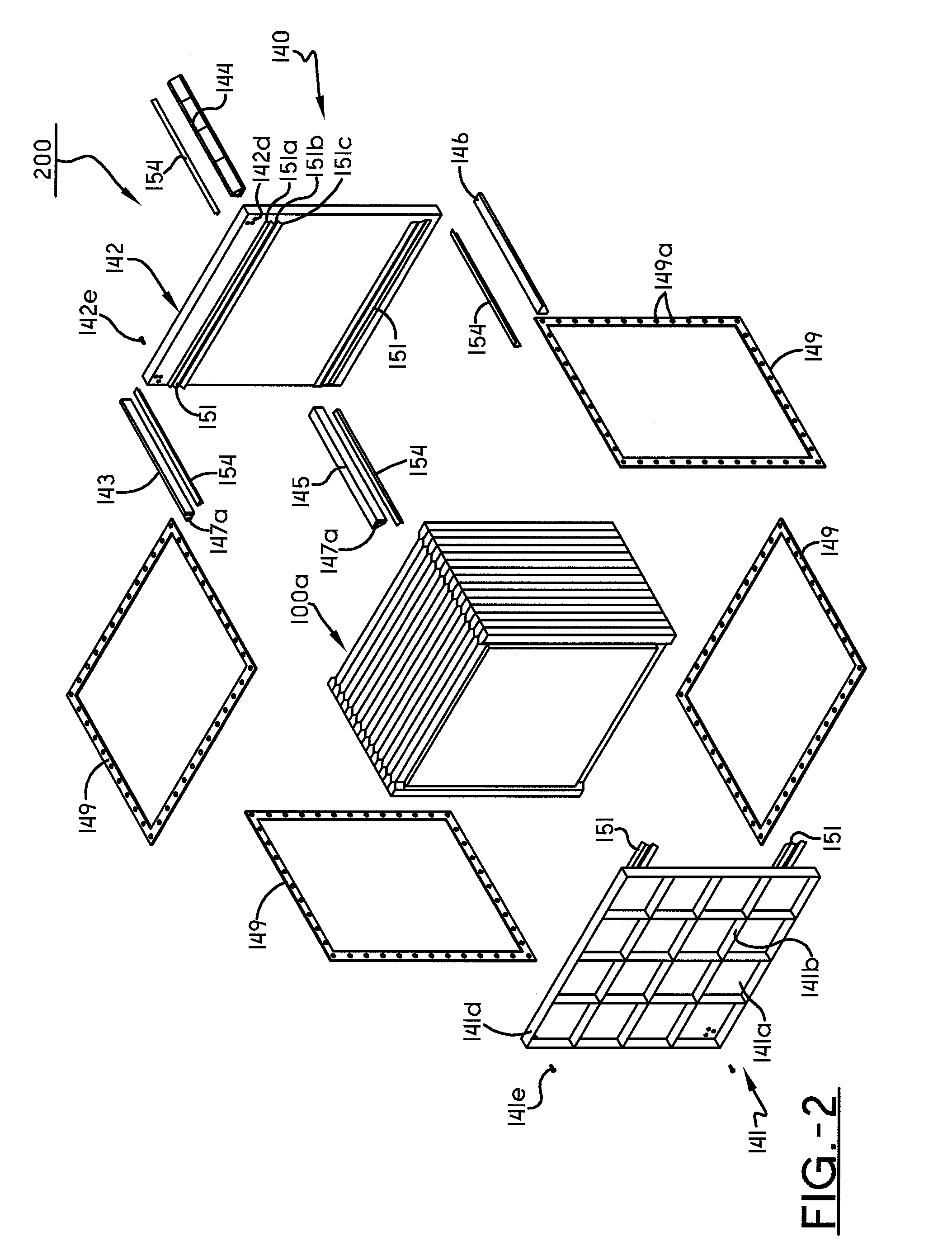Plate type heat exchanger
a heat exchanger and plate technology, applied in the direction of heat exchanger fastening, lighting and heating apparatus, spacing means, etc., can solve the problems of increasing the working burden of the worker, reducing the contact area between the plate as the heat transfer member and the fluid, and reducing the contact area of the plate, so as to prevent the fluid from leaking out, prevent the welding flaw, and simple and rapid fabrication
- Summary
- Abstract
- Description
- Claims
- Application Information
AI Technical Summary
Benefits of technology
Problems solved by technology
Method used
Image
Examples
first embodiment
[0052]FIGS. 3A through 3C illustrate a heat transfer cell that is applied to a heat exchanger according to the present invention, wherein FIG. 3A is an entire perspective view, FIG. 3B is a cross-sectional view taken along line 3b-3b′ of FIG. 3A, and FIG. 3C is a cross-sectional view taken along line 3c-3c′ of FIG. 3A.
[0053]As illustrated in FIGS. 3A, 3B and 3C, the heat transfer cell 130 is formed by welding a pair of heat transfer plates 110 and 120, and thus has an internal passage, through which a fluid flows in one direction, defined by the welded heat transfer plates 110 and 120, which face each other in a mirror image.
[0054]In detail, the heat transfer plate 110 or 120 of the heat transfer cell 130 includes a heat transfer area 111 or 121 shaped of a substantially quadrilateral panel, a pair of first flanges 112 and 113, or 122 and 123 bent from opposite upper and lower edges of the heat transfer area 111 or 121 in one direction when viewed from FIG. 1, and a pair of second f...
second embodiment
[0063]FIGS. 5A through 5C illustrates another example of a heat transfer cell for a heat exchanger according to the present invention, wherein FIG. 5A is an entire perspective view, FIG. 5B is a cross-sectional view taken along line 5b-5b′ of FIG. 5A, and FIG. 5C is a cross-sectional view taken along line 5c-5c′ of FIG. 5A.
[0064]As illustrated in FIGS. 5A, 5B and 5C, the heat transfer cell 130a made up of a pair of heat transfer plates 110a and 120a has an internal passage P2, through which a fluid flows in one direction, defined by welding the heat transfer plates 110a and 120a, which are opposite to each other in a mirror image.
[0065]In detail, the heat transfer plate 110a or 120a of the heat transfer cell 130a includes a heat transfer area 111a or 121a shaped of a quadrilateral panel, a pair of first flanges 112a and 113a, or 122a and 123a bent from opposite upper and lower edges of the heat transfer area 111a or 121a in one direction, and a pair of second flanges 114a and 115a, ...
PUM
 Login to View More
Login to View More Abstract
Description
Claims
Application Information
 Login to View More
Login to View More - R&D
- Intellectual Property
- Life Sciences
- Materials
- Tech Scout
- Unparalleled Data Quality
- Higher Quality Content
- 60% Fewer Hallucinations
Browse by: Latest US Patents, China's latest patents, Technical Efficacy Thesaurus, Application Domain, Technology Topic, Popular Technical Reports.
© 2025 PatSnap. All rights reserved.Legal|Privacy policy|Modern Slavery Act Transparency Statement|Sitemap|About US| Contact US: help@patsnap.com



